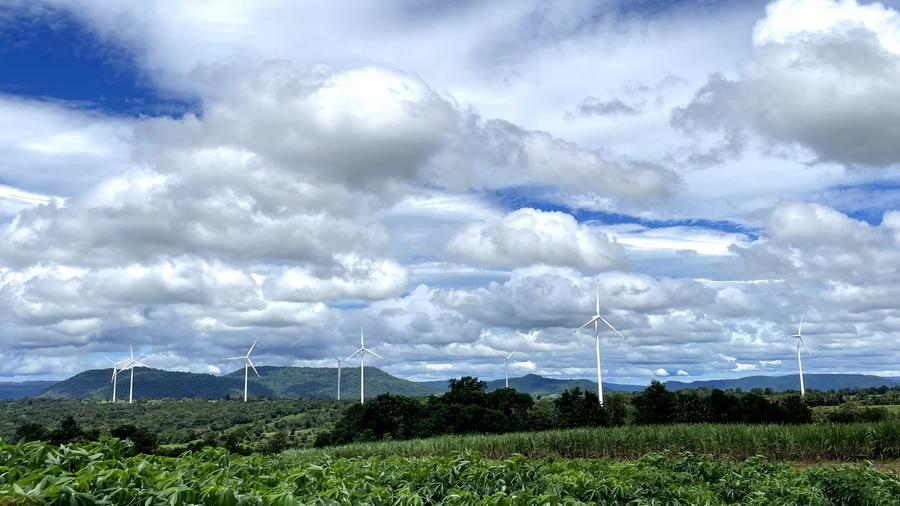Commentary: New energy industry faces undercapacity, not overcapacity

This photo taken on Oct. 4, 2022 shows wind turbines provided by China's Goldwind in Chaiyaphum, Thailand. (Xinhua/Song Yu)
BEIJING, April 25 (Xinhua) -- In the ongoing discourse surrounding the global new energy sector, the U.S. allegations of "overcapacity" in China starkly contradict the prevailing reality of significant undercapacity in the industry.
With a burgeoning demand for clean energy solutions to combat climate change, the global landscape indicates a pressing need for expanded production capabilities rather than an excess.
The characterization of overcapacity appears peculiar when people consider the innovative and tech-driven nature of the new energy industry, which embodies the growing trend of energy transition. This sector remains in its nascent stages of rapid growth, with the demand for new energy products outstripping current global capacity.
According to projections by the International Energy Agency, the demand for new energy vehicles is anticipated to skyrocket, reaching 45 million by 2030, 4.5 times that of 2022. Similar exponential growth is expected in global demand for new photovoltaic installations. Aligning with these projections, the consensus reached at the 28th session of the Conference of the Parties to the UN Framework Convention on Climate Change also underscores the urgent need to triple renewable energy capacity by 2030.
Of particular note is the Sunnylands Statement on Enhancing Cooperation to Address the Climate Crisis, wherein China and the United States have reaffirmed their commitment to collaborative efforts in tackling climate change, including the support for tripling renewable energy capacity globally by 2030.
Despite claims of overcapacity, there remains a consistent global demand for Chinese new energy products like vehicles and batteries, evidenced by many countries seeking investments from Chinese enterprises in this sector. Moreover, the significant policy backing from the United States, particularly through initiatives like the Inflation Reduction Act, further emphasizes this disparity.
The escalating demand for new energy globally necessitates sustained efforts to expand production capacity, with China's robust development of the new energy industry playing a pivotal role in this endeavor. China's swift advancement in new energy technology, combined with its commitment to product quality, has earned growing recognition both at home and abroad.
The resilience and competitiveness of China's new energy products stem from various factors, including early investment in research and development, a comprehensive industrial chain, a vast domestic market, rapidly evolving infrastructure, and robust market competition encompassing state-owned, private and foreign entities.
Allegations of overcapacity in China's new energy industry seem driven by protectionist motives. Rather than reducing China's capacity, the global community should strive for expanded investment and access to Chinese products to accelerate the energy transition.
Photos
Related Stories
- Xinjiang sees increasing new energy installed capacity
- Chinese new energy industry contributes to global green, low-carbon transition
- Installed capacity of new energy in southern China grow rapidly
- China's Inner Mongolia sees installed capacity of new energy topping 100 mln kilowatts
- New energy revitalizes China's coal-mining subsidence areas
Copyright © 2024 People's Daily Online. All Rights Reserved.









